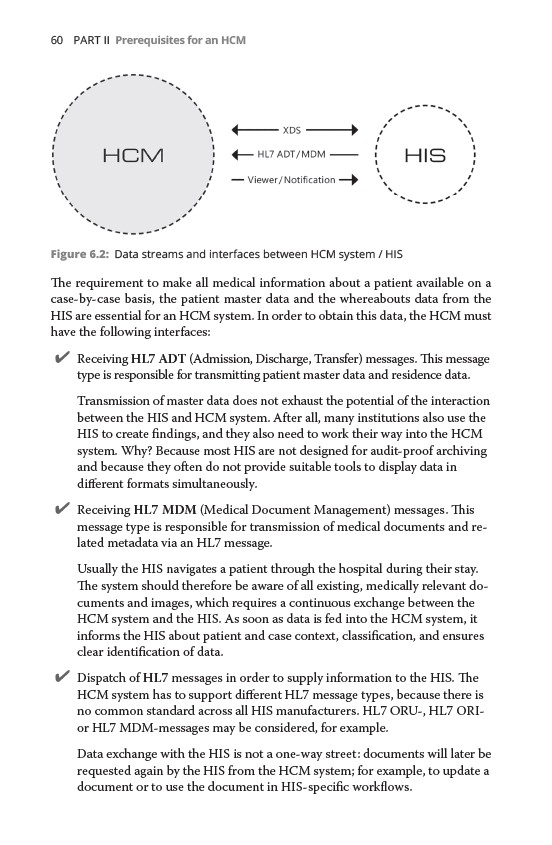
60 PART II Prerequisites for an HCM
Figure 6.2: Data streams and interfaces between HCM system / HIS
The requirement to make all medical information about a patient available on a
case-by-case basis, the patient master data and the whereabouts data from the
HIS are essential for an HCM system. In order to obtain this data, the HCM must
have the following interfaces:
✔✔Receiving HL7 ADT (Admission, Discharge, Transfer) messages. This message
type is responsible for transmitting patient master data and residence data.
Transmission of master data does not exhaust the potential of the interaction
between the HIS and HCM system. After all, many institutions also use the
HIS to create findings, and they also need to work their way into the HCM
system. Why? Because most HIS are not designed for audit-proof archiving
and because they often do not provide suitable tools to display data in
different
formats simultaneously.
✔✔Receiving HL7 MDM (Medical Document Management) messages. This
message type is responsible for transmission of medical documents and related
metadata via an HL7 message.
Usually the HIS navigates a patient through the hospital during their stay.
The system should therefore be aware of all existing, medically relevant documents
and images, which requires a continuous exchange between the
HCM system and the HIS. As soon as data is fed into the HCM system, it
informs the HIS about patient and case context, classification, and ensures
clear identification of data.
✔✔Dispatch of HL7 messages in order to supply information to the HIS. The
HCM system has to support different HL7 message types, because there is
no common standard across all HIS manufacturers. HL7 ORU-, HL7 ORI-
or HL7 MDM-messages may be considered, for example.
Data exchange with the HIS is not a one-way street: documents will later be
requested again by the HIS from the HCM system; for example, to update a
document or to use the document in HIS-specific workflows.